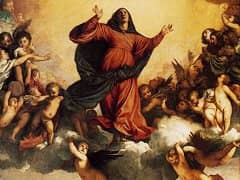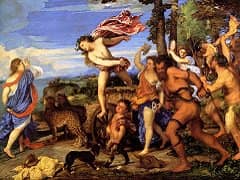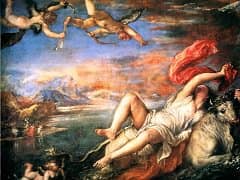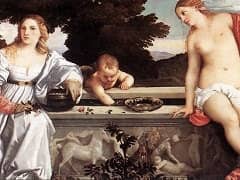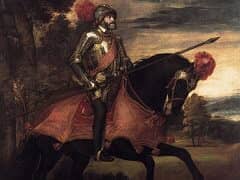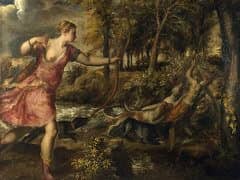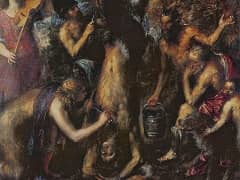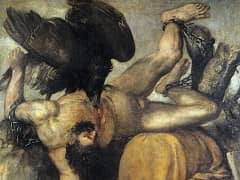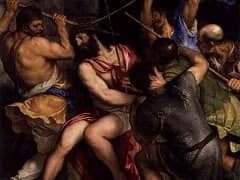Madonna and Child with Saint John and Saint Catherine, 1530 by Titian
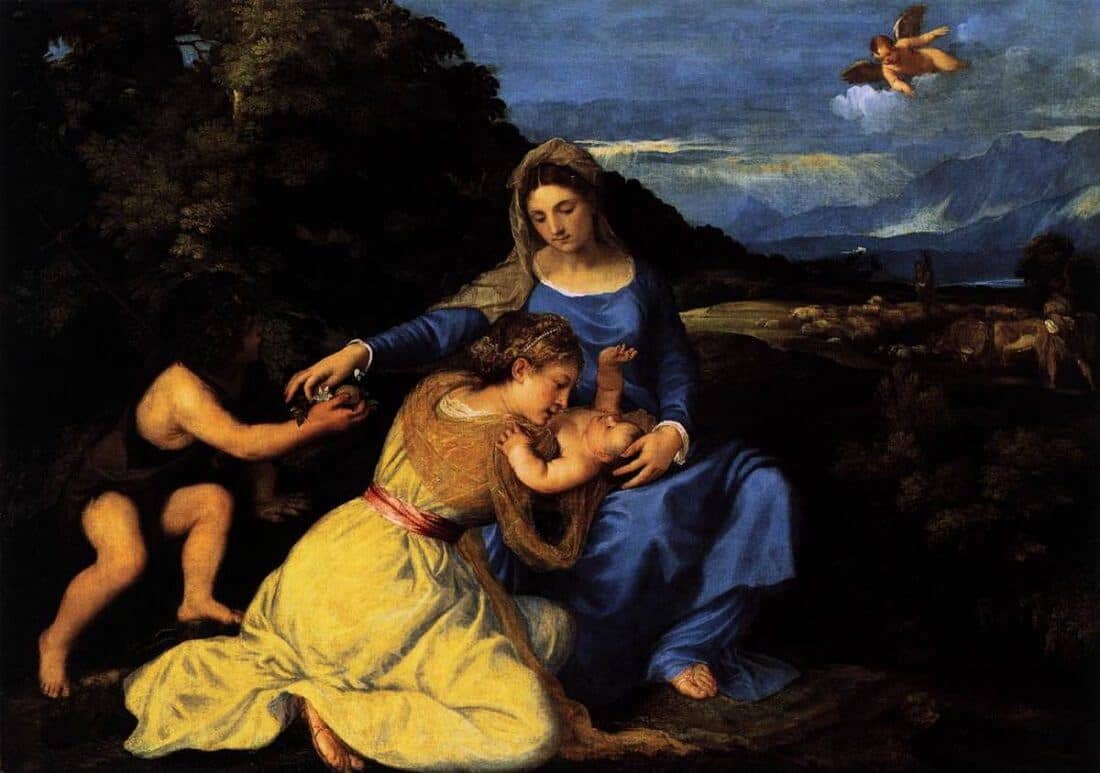
Returning to a theme developed by Giovanni Bellini and with the experience of the Peter Martyr altarpiece just behind him, Titian continued to explore the formal and expressive possibilities
of landscape, expanding its active function as protagonist. In this painting, which may have come from the collection of Alfonso d'Este at Ferrara, the landscape initially asserts its
importance by the sheer amount of surface it occupies. Although the compactly composed figure group, set in the immediate foreground, dominates the composition, it reaches out, through
gesture and color, to participate in a highly deliberated fashion with its surroundings. Mary, the presiding figure of the group, draws the young Baptist into the central scene, the mystic
and here extremely intimate marriage of Saint Catherine to the Christ Child. The intense blue of the Virgin's dress moves out into the distant mountain range - although modern cleaning may
have deprived these blues of their modifying glazes - and the rays of heavenly light behind her modify the yellows of Catherine's gown.
Chromatic structure of this kind becomes increasingly important in Titian's art about this time, and it was especially the painting of landscape that encouraged a looser brushwork of more
open and hence potentially more variable touches; through this breaking up of surfaces the master found a means toward a more subtle and complex mode of pictorial construction. At the same
time he discovered a greater resonance in landscape, not only in its formal possibilities but in its expressive potential as well. Whereas his earlier landscape settings were rich with
rhetorical significance, here landscape is invested with a still more precise eloquence, a suppleness of expression commensurate with the quiet profundity of the figures.
Perhaps the crucial element, or experience, in this controlled exploration is light, which, again through the growing sophistication of Titian's brushwork, assumes an increasingly subtle
function. And for this Titian found inspiration in the inherited iconographic traditions within which he was working. The metaphorical image of Mary as a cloud containing the divine light -
an image Titian had earlier realized in his Annunciation for the Malchiostro Chapel in the Cathedral of Treviso - is brought to visual life here in the motif of light breaking through the
clouds behind the Virgin, pouring down upon her. This natural symbol of the Incarnation is made all the more poignant by the axial relationship to the vertically upraised arm of the Child.
The equation of sky with heaven receives further statement in the background scene to the right: the appearance of the angel to the shepherds. Alluding to the Nativity, this annunciation to
the shepherds affirms the symbolic significance of the heavenly illumination as the birth of the Sol splendidissimus, the most brilliant sun. Although Saint John, Saint Catherine, and the
shepherds belong to different historical moments in the life and afterlife of Christ, Titian has achieved an apparently natural iconographic unity by means of the landscape, which becomes
not only the unifying setting for these figures and situations but, in a larger sense, both symbol of and commentary on the presence of the divine in this world.

